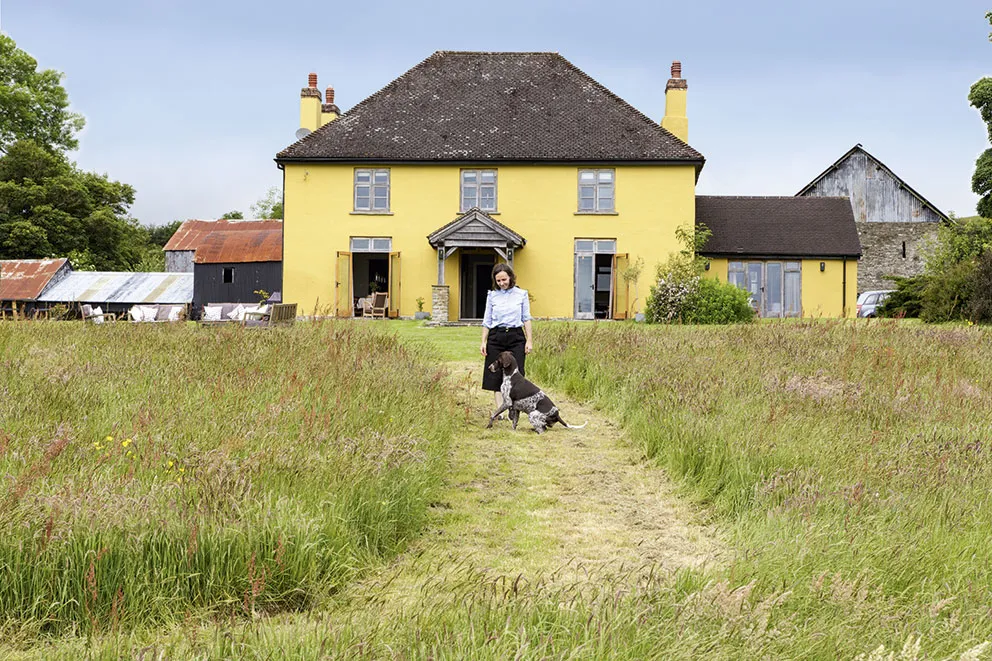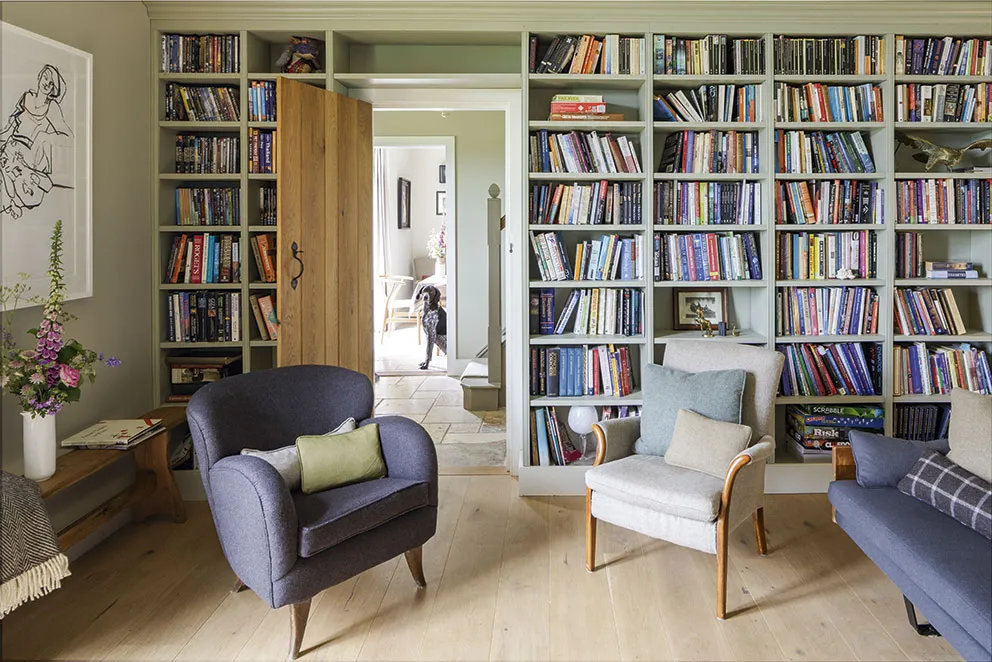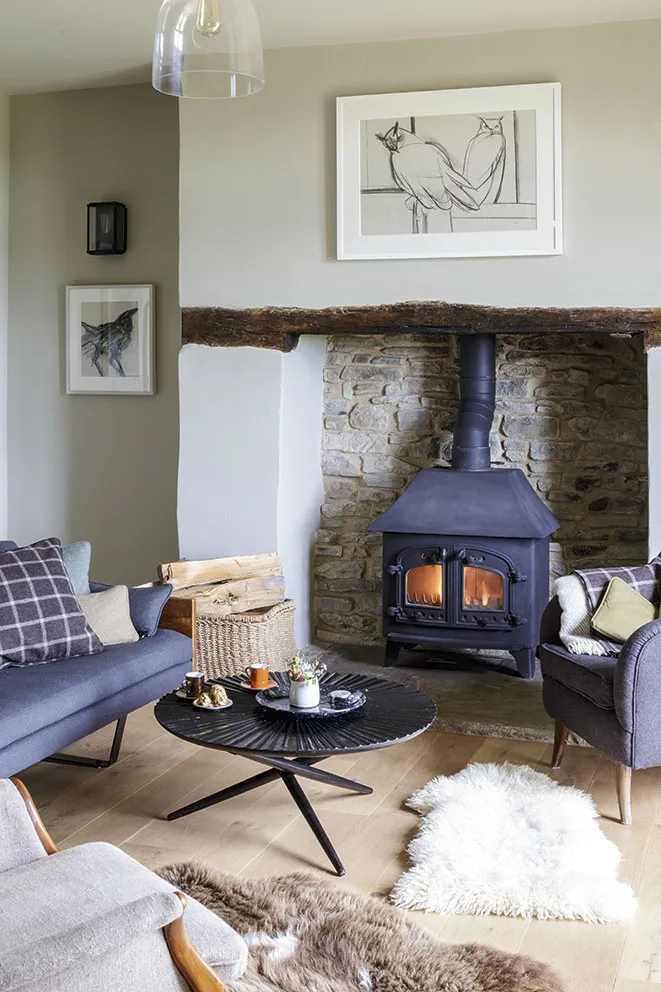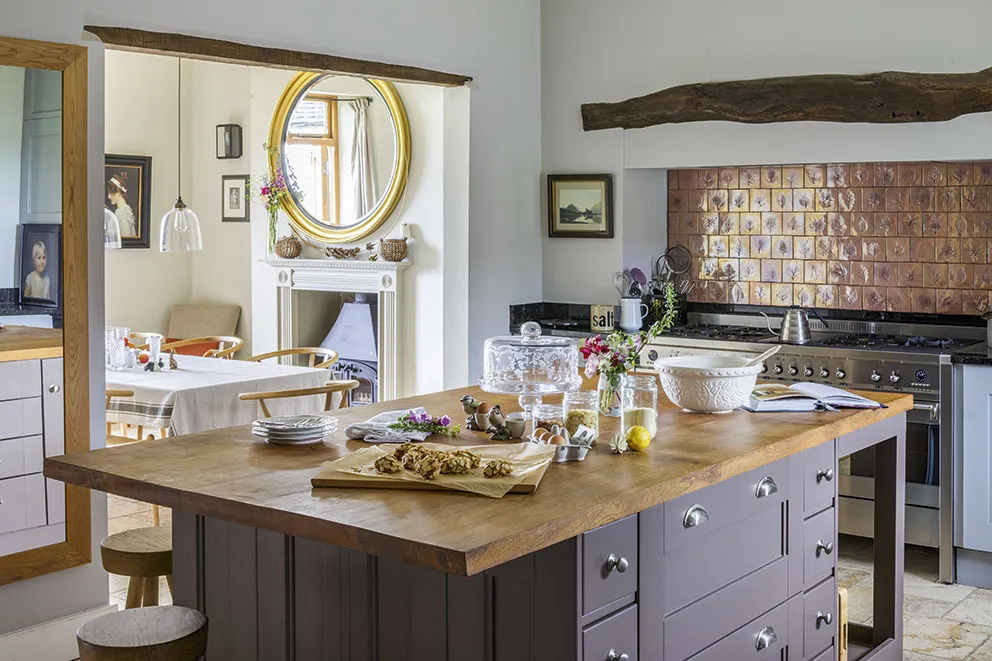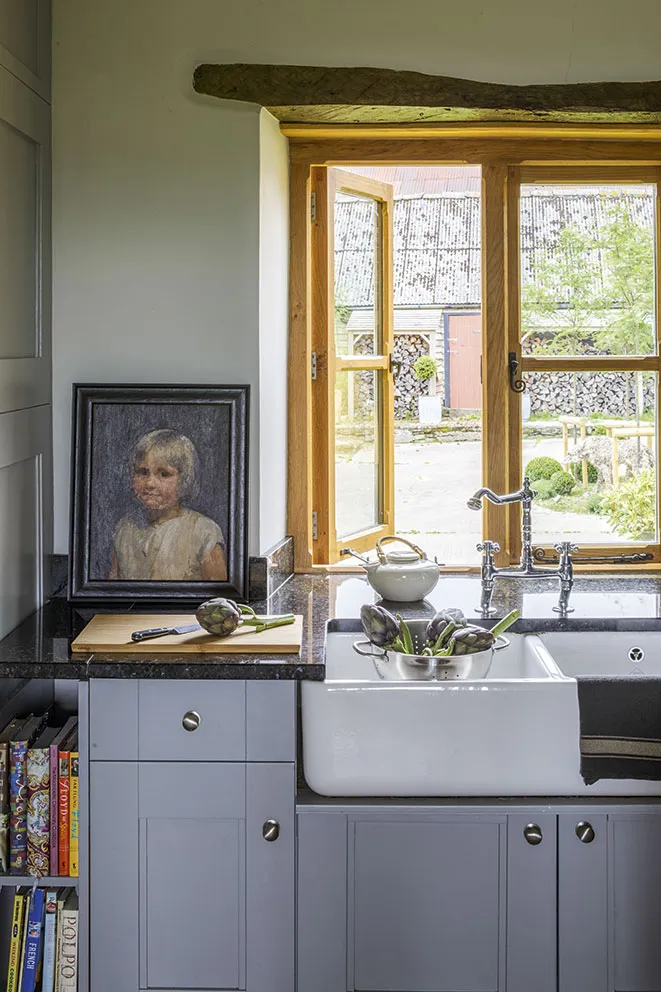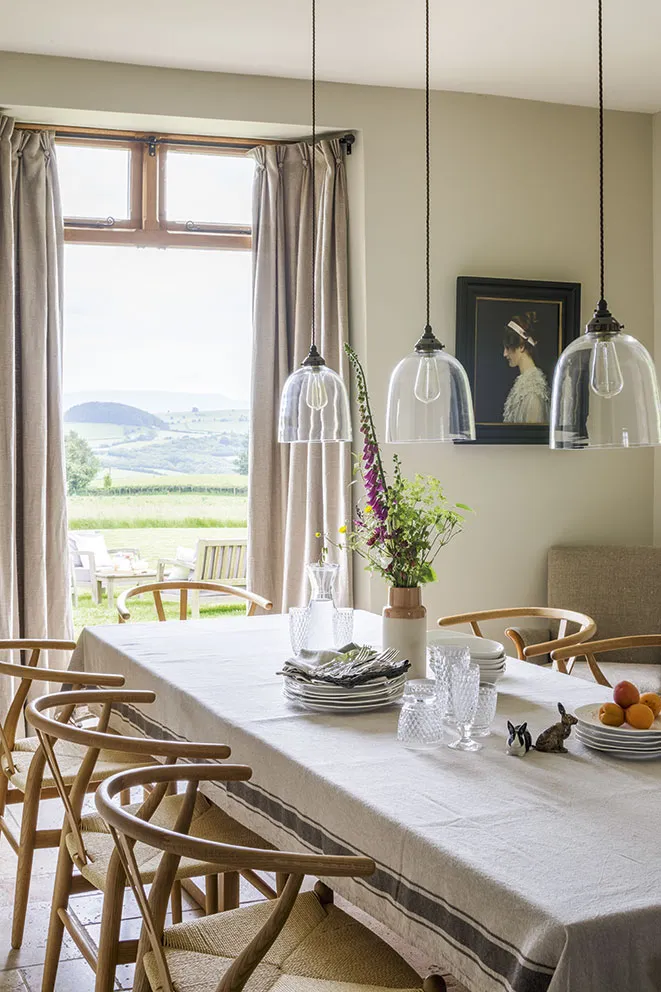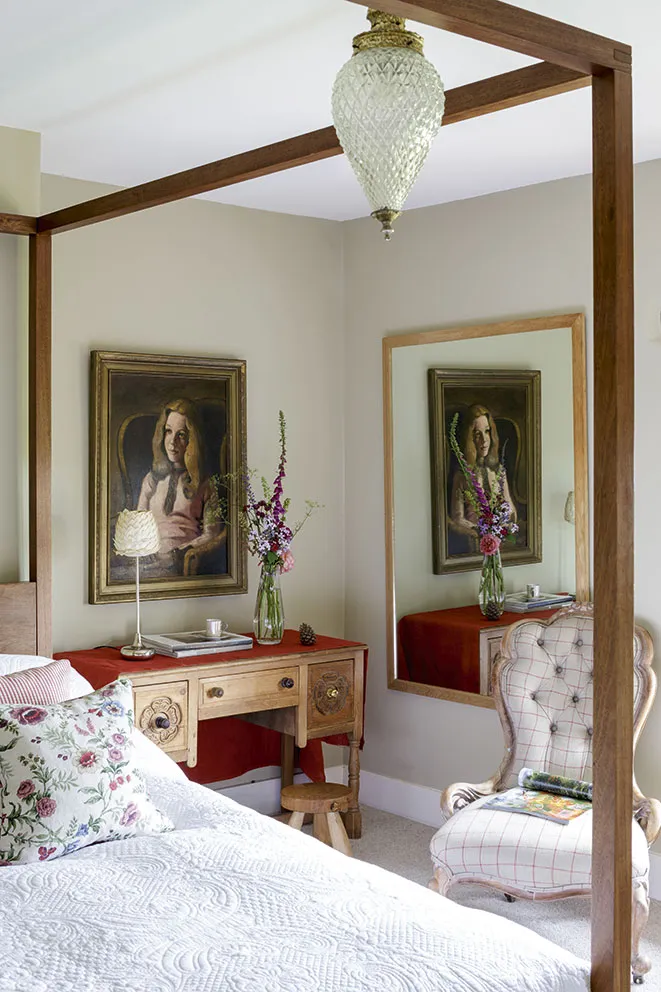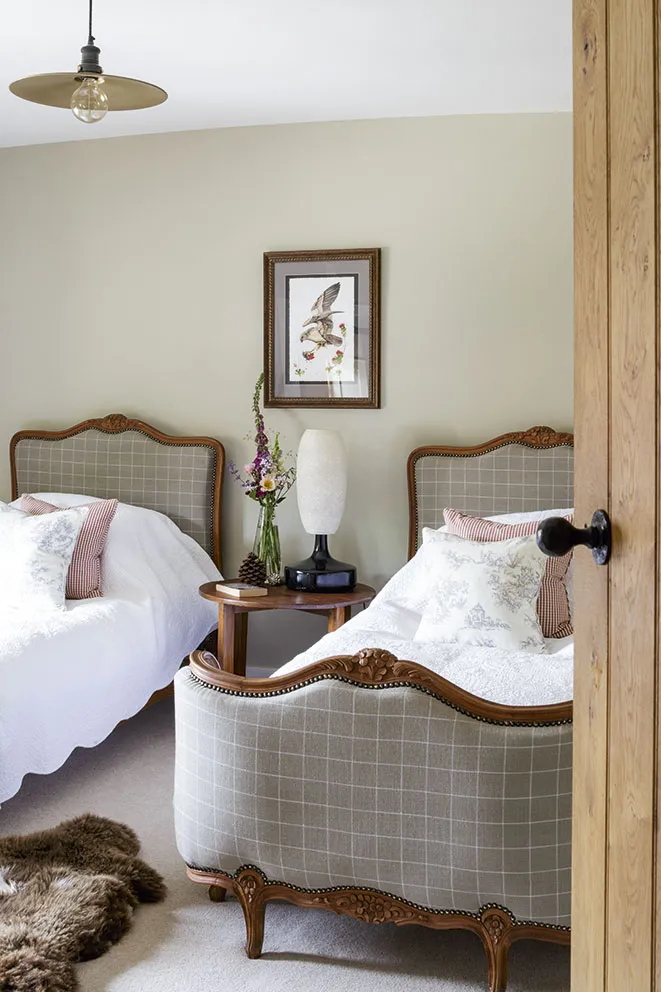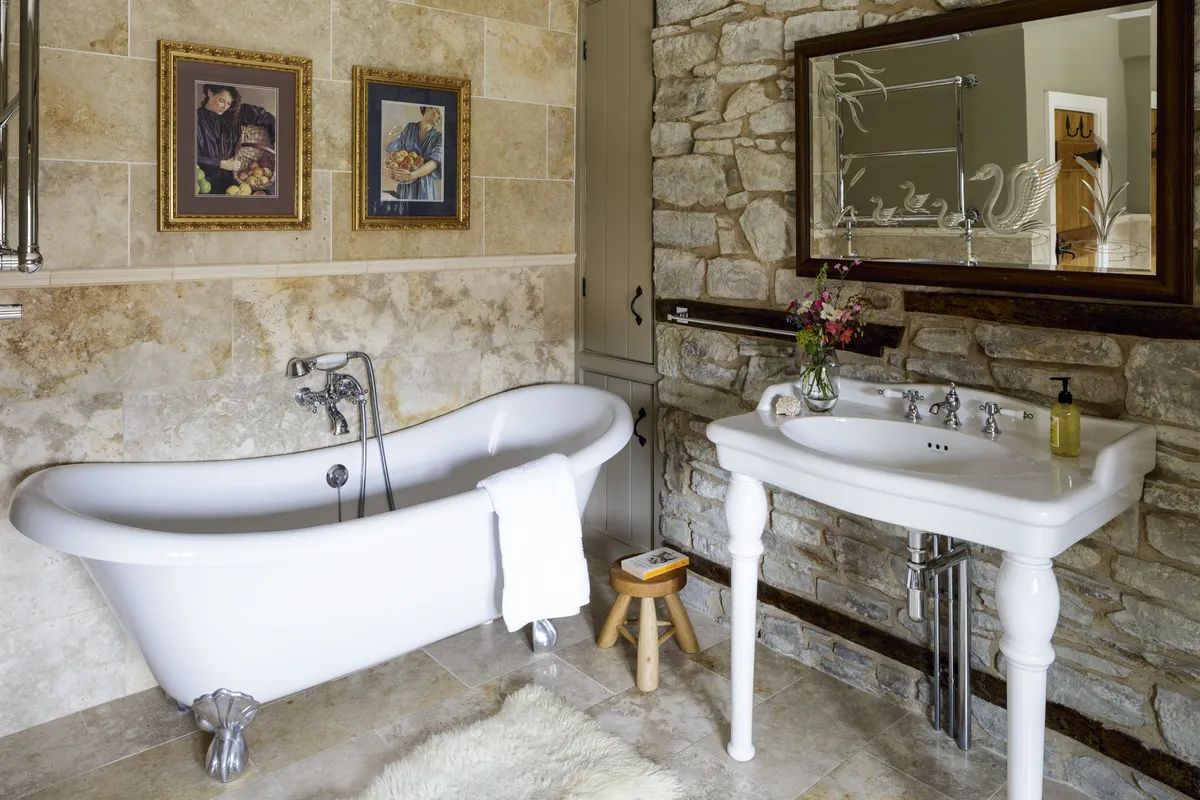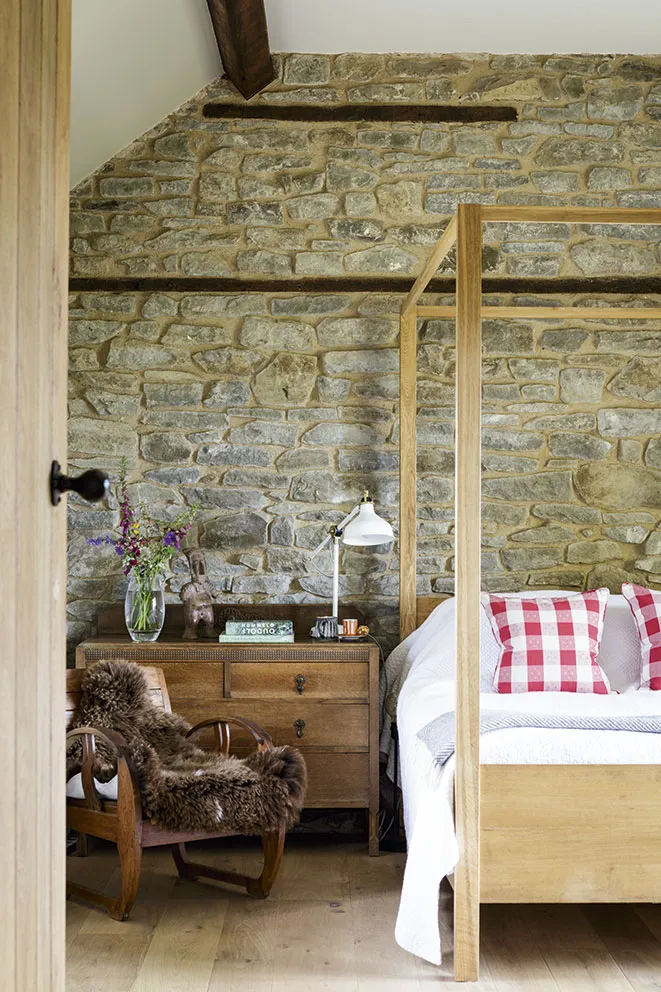Juliette Fernandes spent her formative years in her parents’ bustling, 45-bedroom hotel in Manchester, and has fond memories of the noise and hubbub. ‘We had up to five weddings each weekend,’ she recalls. ‘I’ve seen some wedding dresses over the years!’ However, it wasn’t always easy sharing her home with endless guests. ‘We didn’t really have a family sitting room,’ she says. As a result, Juliette swore she’d never work in a hotel.
‘But somehow it snuck up on me,’ she laughs, explaining how each week she welcomes grateful guests into the idyllic home, just outside Hay-on-Wye, which she shares with her partner Neal. Situated at the end of a long track, with spectacular views towards the Black Mountains, their farmhouse, known as The Red Kite, could not be further removed from her childhood home in terms of location, scale and style. ‘My dad is Portuguese and he loves colour and pattern,’ she says and, like many of the wedding parties they hosted, the hotel’s decor was pretty flamboyant. ‘Dad always wanted to add more florals. Florals on top of florals,’ she recalls. ‘Mum and I would tease him about it endlessly.’
While still running the hotel, her parents bought a plot of land and built their own home. ‘Mum took over the reins with the decorating, and interiors magazines started to flood into the house,’ says Juliette. It was a seminal moment, and the start of an abiding interest in interiors. ‘Doing up houses became my creative outlet, as well as my work,’ she says. Six years ago, having completed a house in London, Juliette was ready for a new challenge.
You might also like inside Kingshill Farmhouse in Kent
‘Although I’ve never really wanted to escape the city,’ she says. ‘Neal craved nature and more space, and I wanted to paint and write.’ They experimented by renting a cottage for six months. This proved to be ‘a magical experience’, at the end of which they’d decided to find a similar property, to run as an organic B&B.
A chance visit to a friend’s house in Hay-on-Wye resulted in a spontaneous viewing. ‘We were just flirting with the idea,’ she says, recalling their first, rather underwhelming viewing of The Red Kite. ‘The deeds go back to 1665 but, when I looked at the house, I couldn’t see its age at all.’
The building had been through many changes over the years, and in the 17th century had served as a safe meeting place for persecuted Quakers. Its recent past was less romantic, merely involving extensive and expensive modernisation of the kitchen and several bathrooms. ‘Its character was hidden,’ sighs Juliette. ‘But it would have cost thousands of pounds to strip it back to reveal the original shell.’
Despite her misgivings, both she and Neal were struck by the building’s extraordinary air of tranquillity. ‘A house is as much about the landscape in which it sits as the rooms inside it,’ she says. In the end, the beautiful location won out.
Because it was all so pristine and the rooms lacked the usual period details such as cornices, old fireplaces or wonky ceilings, Juliette was released from the need to remain faithful to existing features. But even so, she was determined to recycle what was there. ‘It felt criminal to remove stuff that had only been put in two years earlier,’ she says.
In one of the bathrooms, she enlivened the walls with Georgian-style panelling and, in the kitchen, which had been recently installed, Juliette asked a carpenter to take down and rearrange the wall units to create an island onto which she fitted an oak worktop.
You might also like a 19th-century farmhouse in the Somerset countryside
When it came to furnishing the house, there was no need to stick to a particular style. Juliette’s taste is very broad, she says. ‘I’m guided by what I like and I just trust that it will work.’ Over the last 20 years and several properties, she has accumulated a magpie mix of furniture and is as excited by the clean lines of the mid-century pieces she chose for the sitting room as she is by the more ornate 19th-century French chairs in the bedrooms.
A wonderful set of deco garden furniture has been split up and placed in various rooms around the house. They work so well inside that more than one guest has offered to buy them. ‘When it came to the colours for the interior, I took inspiration from the landscape,’ she says. ‘The rooms are all designed to frame rather than compete with the view beyond the windows.’
Although determined not to follow her parents into the hotel trade, Juliette found she’d learned the business by osmosis. Soon enough they were fully booked, and Juliette was surprised to find how much she enjoyed sharing her life with a constant stream of guests. ‘My parents had such a passion for giving people a wonderful experience,’ she says, ‘and I realised, through them, it came naturally to me too.’ However, there was a downside to their success. ‘I had no time for painting or writing – the very things I’d left London to pursue,’ she says.
The solution is a small cabin, built on their land, some distance from The Red Kite. This new addition is where the couple retreat to when guests book into their house, which Juliette lets in its entirety. ‘I love the way the best hotels feel like a home from home,’ she says, and this is what she strives to achieve. ‘Each week, I arrange the flowers and greet my new guests and see that they’re settled and happy. Then I leave them to it. There is a better balance to life now, and I’ve finally started to write.’
More homes from Homes & Antiques
- A19th-century farmhousein Broekhuizenvorst
- An antiques-filled farmhouse in Sussex
- A renovated ancient French farmhouse
- How to renovate a 17th-century farmhouse
Sign up to ourweekly newsletterto enjoy more H&A content delivered to your inbox.
